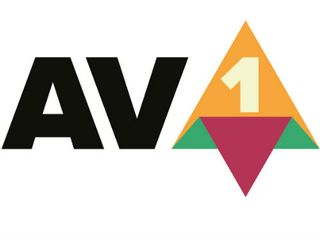Facebook: Tests Show AV1 Streaming Performance is Exceeding Expectations

Facebook, one of several major online video players putting its weight behind AV1, a new royalty-free codec, has posted test results showing that AV1’s bitrate efficiencies are exceeding expectations.
RELATED: Royalty-Free AV1 Codec Turned Loose
As a backdrop, AV1 is being billed as a codec that is 30% more efficient than current-gen codecs, such as HEVC and VP9. The Alliance for Open Media, the group behind AV1 with members that include Facebook, Google, Netflix and Amazon and was founded in 2015, released the 1.0 version of the codec last month.
NAB 2018: Hardware Support a Big Step Ahead for AV1
In a blog post, Facebook software engineer Yu Liu said the results are 50%-plus when Facebook tested AV1 using about 400 of the most-viewed public videos (primarily with SD and HD files) on the social media platform versus performance on “standard reference software encoders.”
“Our test examined AV1's performance vs. practical open source video encoders that can be deployed to a practical production system, rather than merely testing efficiency vs. standard reference software encoders (i.e., H.264/AVC Joint Model or JM),” Liu noted. “By structuring the test this way, we were able to show how the codec will perform in a true production environment compared with current widely used alternatives, such as x264 and libvpx-vp9.”

In those tests, AV1 surged past its stated goal of 30% better compression versus VP9, and achieves gains of up to 50.3%, 46.2% and 34.0%, compared to x264 main profile, x264 high profile and libvpx-vp9, respectively, he added.
Though the tests focused on SD and HD, Liu said the conclusion is that that AV1 will deliver “even higher efficiency gains with UHD/4K and 8K content.”
As for next steps, he said Facebook will “gradually” serve up AV1 content on the web for popular Facebook videos as Chrome and Firefox browsers implement support.
AV1: Origins and the Road Ahead
Facebook released those results Wednesday just as a large panel consisting of AOMedia members gathered at the NAB Show in Las Vegas to shed more light on the origins and plans for AV1.
As for those origins, Gabe Frost, AOMedia’s executive director and principal engineering manager for Microsoft’s operating systems group, said the conversation got started more than three years ago when it was doing some work around codecs that led to conversation with Google about another royalty-free codec, VP9.
He said Microsoft was struggling with the notion of pouring R&D into products that used video codecs and stymied by the speed of adoption.
“We felt we had to create a new way of going forward…and a new business model,” he said.
Matt Frost, AOMedia’s founding board member and head of strategy and partnerships at Google, agreed that there was a need for a royalty-free, next-gen codec that could scale across web technologies, with the codec itself serving as the foundation for companies to innovate on top of and apply to products that compete in the market.
A royalty-free approach brings a level of certainty to business models and enables companies to go “all-in” and build the ecosystem, noted Zach Hamm, an AOMedia founding board member, and director of media and display strategy and planning at chipmaker Intel Corp. (initial AV1 implementations of AV1 will be done in software; support on chips and other hardware is probably two years out).
“I’d say free is a really great price,” Mark Watson, another AOMedia founding board member and director of streaming standards at Netflix, said.
Netflix, which offers 4K content and is interested in more efficient codecs to help it lower streaming costs and deliver higher-quality streams in parts of the world with more limited bandwidth connectivity, expects to start delivering AV1 streams on web browsers later this year, Watson said.
Google’s Frost also acknowledged that codecs that use royalty-based models will be paying attention to AV1. “Are they going to be affected by this? Yes they are,” Google’s Frost said.
It’s still not clear what the other codec-facing patent pools think of AV1. “We haven’t heard much from them…so it’s hard to get into their minds,” David Rudin, AOMedia founding board member, and president, Joint Development Foundation LLC and assistant general counsel at Microsoft, said.
In the meantime, Frost said Google is optimizing its encoding technology for VP1 today as well as for software decoders for Chrome and Firefox to help with video playback for the likes of Netflix, Amazon and Facebook.
Software-based implementations will give AV1 a rolling start, though time will tell how that limits capabilities like refresh rates and resolution. “Hardware will be a key enabler” for AV1, Intel’ Hamm said, predicting that hardware rollouts will arrive within 18 to 24 months, starting on the decoder side.
Also in the early going AV1 will focus on OTT streaming applications and won’t be aggressively pushing for adoption in the broadcast TV sector, Google’s Frost said.
At the same time, there has been interest from broadcasters and discussions are happening, he said. Notably, ATSC 3.0, the next-gen broadcast transmission standard, does aim to support OTT-like capabilities, so there could be some potential alignments with AV1 further down the road.
Multichannel Newsletter
The smarter way to stay on top of the multichannel video marketplace. Sign up below.



